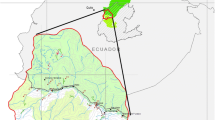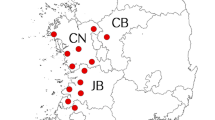Abstract
To assess the presence of rickettsial pathogens in ticks from Egypt, we collected ticks from domestic and peridomestic animals between June 2002 and July 2003. DNA extracts from 1019 ticks were tested, using PCR and sequencing, for Anaplasma spp., Bartonella spp., Coxiella burnetii, Ehrlichia spp., and Rickettsia spp. Ticks included: 29 Argas persicus, 10 Hyalomma anatolicum anatolicum, 55 Hyalomma anatolicum excavatum, 174 Hyalomma dromedarii, 2 Hyalomma impeltatum, 3 Hyalomma marginatum rufipes, 55 unidentified nymphal Hyalomma, 625 Rhipicephalus (Boophilus) annulatus, 49 Rhipicephalus sanguineus, and 17 Rhipicephalus turanicus. Ticks were collected predominantly (>80%) from buffalo, cattle, and camels, with smaller numbers from chicken and rabbit sheds, sheep, foxes, a domestic dog, a hedgehog, and a black rat. We detected Anaplasma marginale, Coxiella burnetii, Rickettsia aeschlimannii, and four novel genotypes similar to: “Anaplasma platys,” Ehrlichia canis, Ehrlichia spp. reported from Asian ticks, and a Rickettsiales endosymbiont of Ixodes ricinus.

Similar content being viewed by others
References
Allsopp MTEP, Visser ES, du Plessis JL, Vogel SW, Allsopp BA (1997) Different organisms associated with heartwater as shown by analysis of 16S ribosomal RNA gene sequences. Vet Parasitol 71:283–300
Amin OM, Madbouly MH (1973) Distribution and seasonal dynamics of a tick, a louse fly, and a louse infesting dogs in the Nile Valley and Delta of Egypt. J Med Entomol 10:295–298
Anderson BE, Sumner JW, Dawson JE, Tzianabos T, Greene CR, Olson JG, Fishbein DB, Olsen-Rasmussen M, Holloway BP, George EH (1992) Detection of the etiologic agent of human ehrlichiosis by polymerase chain reaction. J Clin Microbiol 30:775–780
Awad FI, Amin MM, Salama SA, Khide S (1981) The role played by Hyalomma dromedarii in the transmission of African horse sickness virus in Egypt. Bull Anim Health Prod Afr 29:337–340
Bekker CP, Vink D, Lopes Pereira CM, Wapenaar W, Langa A, Jongejan F (2001) Heartwater (Cowdria ruminantium infection) as a cause of postrestocking mortality of goats in Mozambique. Clin Diagn Lab Immunol 8:843–846
Beninati T, Lo N, Sacchi L, Genchi C, Noda H, Bandi C (2004) A novel alpha-Proteobacterium resides in the mitochondria of ovarian cells of the tick Ixodes ricinus. Appl Environ Microbiol 70:2596–2602
Botros BA, Elmolla MS, Salib AW, Calamaio CA, Dasch GA, Arthur RR (1995) Canine ehrlichiosis in Egypt: sero-epidemiological survey. Onderstepoort J Vet Res 62:41–43
Botros BA, Soliman AK, Darwish M, El Said S, Morrill JC, Ksiazek TG (1989) Seroprevalence of murine typhus and fievre boutonneuse in certain human populations in Egypt. J Trop Med Hyg 92:373–378
Brown RB, Lane RS, Dennis DT (2005) Geographic distributions of tick-borne diseses and their vectors. In: Goodman JL, Dennis DT, Sonenshine DE (eds) Tick-borne disease of humans. ASM Press, Washington, D.C., pp 363–391
Carl M, Tibbs CW, Dobson ME, Paparello S, Dasch GA (1990) Diagnosis of acute typhus infection using the polymerase chain reaction. J Infect Dis 161:791–793
Corwin A, Habib M, Watts D, Darwish M, Olson J, Botros B, Hibbs R, Kleinosky M, Lee HW, Shope R, Kilpatrick M (1993) Community-based prevalence profile of arboviral, rickettsial, and Hantaan-like viral antibody in the Nile River Delta of Egypt. Am J Trop Med Hyg 48:776–783
Diab FM, El Kady GA, Shoukry A (2001) Bionomics of ticks collected from Sinai Peninsula: 2 – abundance, attachment sites, and density estimators of ticks infesting Arabian camels. J Egypt Soc Parasitol 31:479–489
El Kady GA (1998) Protozoal parasites in tick species infesting camels in Sinai Peninsula. J Egypt Soc Parasitol 28:765–776
El Kammah KM, Oyoun LM, El Kady GA, Shafy SA (2001) Investigation of blood parasites in livestock infested with argasid and ixodid ticks in Egypt. J Egypt Soc Parasitol 31:365–371
Helmy N (2000) Seasonal abundance of Ornithodoros (O.) savignyi and prevalence of infection with Borrelia spirochetes in Egypt. J Egypt Soc Parasitol 30:607–619
Hoogstraal H (1985) Argasid and nuttalliellid ticks as parasites and vectors. Adv Parasitol 24:135–238
Hoogstraal H, Kaiser MN (1958) The ticks (Ixodoidea) of Egypt: a brief review and keys. J Egypt Public Health Assoc 33:51–85
Inokuma H, Fujii K, Matsumoto K, Okuda M, Nakagome K, Kosugi R, Hirakawa M, Onishi T (2002a) Demonstration of Anaplasma (Ehrlichia) platys inclusions in peripheral blood platelets of a dog in Japan. Vet Parasitol 110:145–152
Inokuma H, Okuda M, Ohno K, Shimoda K, Onishi T (2002b) Analysis of the 18S rRNA gene sequence of a Hepatozoon detected in two Japanese dogs. Vet Parasitol 106:265–271
Inokuma H, Oyamada M, Kelly PJ, Jacobson LA, Fournier PE, Itamoto K, Okuda M, Brouqui P (2005) Molecular detection of a new Anaplasma species closely related to Anaplasma phagocytophilum in canine blood from South Africa. J Clin Microbiol 43:2934–2937
Jiang J, Chan TC, Temenak JJ, Dasch GA, Ching WM, Richards AL (2004) Development of a quantitative real-time polymerase chain reaction assay specific for Orientia tsutsugamushi. Am J Trop Med Hyg 70:351–356
Jongejan F, de Vries N, Nieuwenhuijs J, Van Vliet AHM, Wassink LA (1993) The immunodominant 32-kilodalton protein of Cowdria ruminantium is conserved within the genus Ehrlichia. Rev Elev Med Vet Pays Trop 46:145–152
Kaplan MM, Bertagna P (1955) The geographical distribution of Q fever. Bull World Health Organ 13:829–860
Kocan KM (2001) Anaplasmosis. In: Service MW (ed) The encyclopedia of arthropod-transmitted infections. CABI Publishing, Wallingford, UK, pp 28–33
Lange JV, El Dessouky AG, Manor E, Merdan AI, Azad AF (1992) Spotted fever rickettsiae in ticks from the northern Sinai Governate, Egypt. Am J Trop Med Hyg 46:546–551
Li JSY, Yager E, Reilly M, Freeman C, Reddy GR, Reilly AA, Chu FK, Winslow GM (2001) Outer membrane protein-specific monoclonal antibodies protect SCID mice from fatal infection by the obligate intracellular bacterial pathogen Ehrlichia chaffeensis. J Immunol 166:1855–1862
Loftis AD, Reeves WK, Szumlas DE, Abbassy MM, Helmy IM, Moriarity JR, Dasch GA (2006) Surveillance of Egyptian fleas for agents of public health significance: Anaplasma, Bartonella, Coxiella, Ehrlichia, Rickettsia, and Yersinia pestis. Am J Trop Med Hyg 75(1):41–48
Mazyad SA, Khalaf SA (2002) Studies on theileria and babesia infecting live and slaughtered animals in Al Arish and El Hasanah, North Sinai Governorate, Egypt. J Egypt Soc Parasitol 32:601–610
McDade JE, Zaklama NS, Imam IZ, Wanees M (1973) Serological survey for Q fever in Egyptian domestic animals. J Egypt Public Health Assoc 48:101–108
Medyannikov OY, Ivanov L, Nishikawa M, Saito R, Sidelnikov YN, Zdanoskaya NI, Mokretsova EV, Tarasivech IV, Suzuki K (2004) Microorganism “Montezuma” of the order Rickettsiales: the potential causative agent of a tick-borne disease in the far east of the Russian Federation. Zh Mikrobiol (Moscow) 1:7–13
Moriarity JR, Loftis AD, Dasch GA (2005) High-throughput molecular testing of ticks using a liquid-handling robot. J Med Entomol 42:1063–1067
Morzaria SP, Latif AA, Jongejan F, Walker AR (1986) Transmission of a Trypanosoma sp. to cattle by the tick Hyalomma anatolicum anatolicum. Vet Parasitol 19:13–21
Moussa MI, Imam IZ, Converse JD, El Karamany RM (1974) Isolation of Matruh virus from Hyalomma marginatum ticks in Egypt. J Egypt Public Health Assoc 49:341–348
National Center for Biotechnology Information (2004) BLAST, version 2.2.10. National Library of Medicine, National Institutes of Health, Bethesda, MD, USA
Neitz WO (1968) Ehrlichia ovina infection. Bull Off Int Epizoot 70:337–340
Parola P, Cornet JP, Sanogo YO, Miller RS, Thien HV, Gonzalez JP, Raoult D, Telford III Sr, Wongsrichanalai C (2003) Detection of Ehrlichia spp., Anaplasma spp., Rickettsia spp., and other eubacteria in ticks from the Thai-Myanmar border and Vietnam. J Clin Microbiol 41:1600–1608
Parola P, Inokuma H, Camicas JL, Brouqui P, Raoult D (2001) Detection and identification of spotted fever group Rickettsiae and Ehrlichiae in African ticks. Emerg Infect Dis 7:1014–1017
Parola P, Roux V, Camicas JL, Baradji I, Brouqui P, Raoult D (2000) Detection of ehrlichiae in African ticks by polymerase chain reaction. Trans R Soc Trop Med Hyg 94:707–708
Pretorius AM, Birtles RJ (2002) Rickettsia aeschlimannii: a new pathogenic spotted fever group rickettsia, South Africa. Emerg Infect Dis 8:874
Raoult D, Fournier PE, Abboud P, Caron F (2002) First documented human Rickettsia aeschlimannii infection. Emerg Infect Dis 8:748–749
Reeves WK, Szumlas DE, Moriarity JR, Loftis AD, Abbassy MM, Helmy IM, Dasch GA (2006) Louse borne pathogens in lice (Phthiraptera) of rodents and cattle from Egypt. J Parasitol 92:313–318
Rikihisa Y (1991) The tribe Ehrlichieae and ehrlichial diseases. Clin Microbiol Rev 4:286–308
Roux V, Fournier PE, Raoult D (1996) Differentiation of spotted fever group rickettsiae by sequencing and analysis of restriction fragment length polymorphism of PCR-amplified DNA of the gene encoding the protein rOmpA. J Clin Microbiol 34:2058–2065
Sarih M, M’Ghirbi Y, Bouattour A, Gern L, Baranton G, Postic D (2005) Detection and identification of Ehrlichia spp. in ticks collected in Tunisia and Morocco. J Clin Microbiol 43:1127–1132
Shanbaky NM, Helmy N (2000) First record of natural infection with Borrelia in Ornithodoros (Ornithodoros) savignyi. Reservoir potential and specificity of the tick to Borrelia. J Egypt Soc Parasitol 30:765–780
Shimada MK, Yamamura MH, Kawasaki PM, Tamekuni K, Igarashi M, Vidotto O, Vidotto MC (2004) Detection of Anaplasma marginale DNA in larvae of Boophilus microplus ticks by polymerase chain reaction. Ann NY Acad Sci 1026:95–102
Shoukry A, El Kady GA, Merdan AI, El Said S (1993) Distribution and host-relationship of ticks (Ixodoidea) infesting domestic animals and rodents in Sinai Peninsula. J Egypt Soc Parasitol 23:459–469
Sixl W, Sebek Z, Kock M, Marth E, Withalm H (1989) Serologic studies of domestic animals for listeriosis, Q-fever, and brucellosis in Cairo. Geogr Med Suppl 3:127–128
Stein A, Raoult D (1992) Detection of Coxiella burnetii by DNA amplification using polymerase chain reaction. J Clin Microbiol 30:2462–2466
Stich RW, Rikihisa Y, Ewing SA, Needham GR, Grover DL, Jittapalapong S (2002) Detection of Ehrlichia canis in canine carrier blood and in individual experimentally infected ticks with a p30-based PCR assay. J Clin Microbiol 40:540–546
Van Straten M, Jongejan F (1993) Ticks (Acari: Ixodidae) infesting the Arabian camel (Camelus dromedarius) in the Sinai, Egypt with a note on the acaricidal efficacy of ivermectin. Exp Appl Acarol 17:605–616
Wen B, Jian R, Zhang Y, Chen R (2002) Simultaneous detection of Anaplasma marginale and a new Ehrlichia species closely related to Ehrlichia chaffeensis by sequence analyses of 16S ribosomal DNA in Boophilus microplus ticks from Tibet. J Clin Microbiol 40:3286–3290
Willems H, Thiele D, Frolich-Ritter R, Krauss H (1994) Detection of Coxiella burnetii in cow’s milk using the polymerase chain reaction (PCR). Zentralbl Veterinarmed B 41:580–587
Williams RE, Hoogstraal H, Casals J, Kaiser MN, Moussa MI (1973) Isolation of Wanowrie, Thogoto, and Dhori viruses from Hyalomma ticks infesting camels in Egypt. J Med Entomol 10:143–146
Acknowledgements
The authors would like to thank Maria Badra, Hanafi A. Hanafi, Alaa Taher, Emad El Din Yehia, and Ahmed Fawzi for invaluable support provided in Egypt; Herbert Thompson and Rachel Priestley, CDC, Atlanta, GA, for providing the real-time PCR assay for Coxiella burnetii; and Robert Massung, CDC, Atlanta, GA, for designing the EC12a primer. Special thanks are extended to the team members from the Vector Biology Department at the Egyptian Ministry of Health for their great support in the field work for this study. This work was supported by GEIS, Work Unit Number No. 847705.82000.25 GB.E0018. The opinions and assertions contained herein are the private views of the authors and are not to be construed as official or reflecting the views of the Department of the Navy, Department of Defense, Department of Health and Human Services, or the United States Government.
Author information
Authors and Affiliations
Corresponding author
Rights and permissions
About this article
Cite this article
Loftis, A.D., Reeves, W.K., Szumlas, D.E. et al. Rickettsial agents in Egyptian ticks collected from domestic animals. Exp Appl Acarol 40, 67–81 (2006). https://doi.org/10.1007/s10493-006-9025-2
Received:
Accepted:
Published:
Issue Date:
DOI: https://doi.org/10.1007/s10493-006-9025-2




